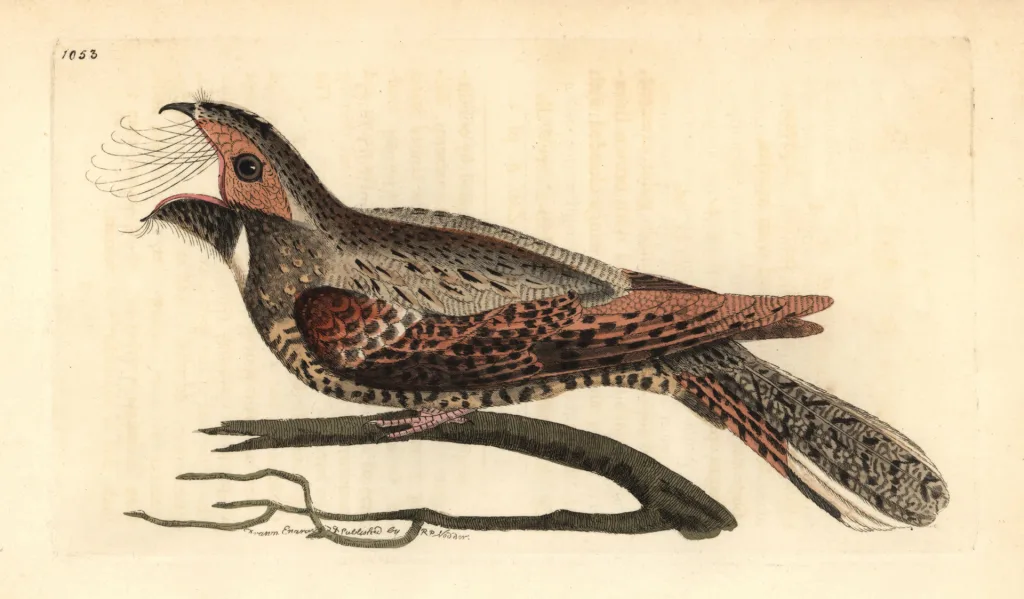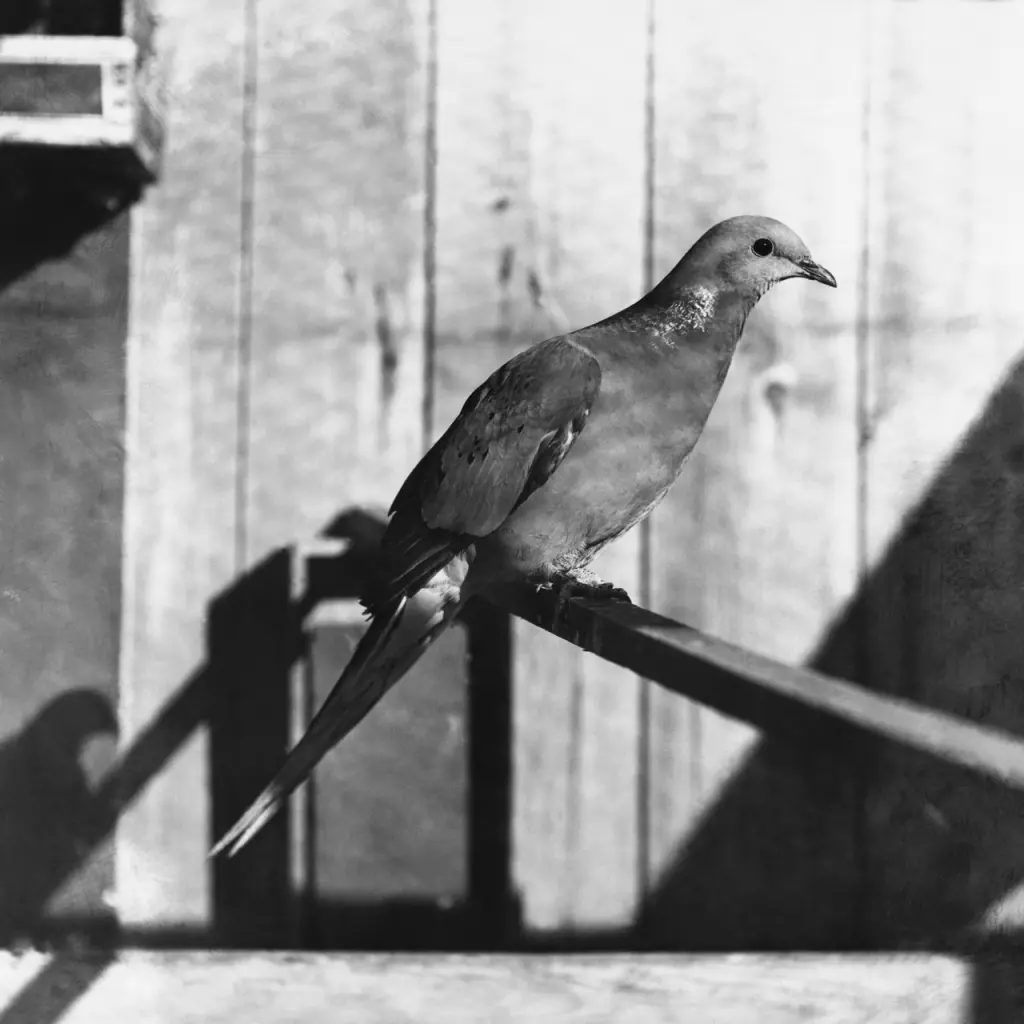In one of the most haunting scenes of Stephen King’s 1975 novel Salem’s Lot, a gravedigger named Mike Ryerson races to bury the coffin of a local boy named Danny Glick. As night approaches, a troubling thought overtakes Mike: Danny has been buried with his eyes open. Worse, Mike senses that Danny is looking through the closed coffin back at him.
A mania overcomes Mike. Prayers run through his head—“the ways things like that will for no good reason.” Then more disturbing thoughts intrude: “Now I bring you spoiled meat and reeking flesh.” Mike leaps into the hole he’s dug and furiously shovels soil off the coffin. The reader knows what he’s going to do, but ought not to do, next: Mike will open the coffin, freeing whatever Danny has become.
Enter the whip-poor-wills. Several of them, King writes, “had begun to lift their shrilling call,” the demand for violence that gives the species its name: whip-poor-will.

This isn’t the first time whip-poor-wills appear in Salem’s Lot, nor is it the last time King would invoke them in his work. But despite the importance of the species to King, whip-poor-wills never appear in film and television adaptations of Salem’s Lot.
Released on October 3, 2024, the most recent adaptation of Salem’s Lot incorporates birdsong but makes little use of them. Here and there, an American crow or blue jay calls. Sparrowlike chirps pepper scenes at night. And as Mike unburies the undead Danny, the less threatening call of a barred owl replaces that of whip-poor-wills.
As a cultural sociologist writing a book about eastern whip-poor-wills, I’m interested in this omission not because it reflects an unfaithful recreation of King’s novel. Rather, I see the erasure of whip-poor-wills from Salem’s Lot as a symptom of broader ecological changes, one in which species loss is also tied to cultural loss.
The horror of the night
As least as early as Washington Irving’s The Legend of Sleepy Hollow, the call of whip-poor-wills, a member of the nocturnal nightjar family, haunted American fiction.
Perhaps the best known whip-poor-wills in American horror appear in H.P. Lovecraft’s novella The Dunwich Horror. Lovecraft references the species nearly two dozen times in his story, with the birds often appearing around the deaths of the Whateley family, who live in the fictional town of Dunwich, Massachusetts.
By behaving in ways that real whip-poor-wills never do, Dunwich’s nightjars symbolize the horrors the Whateleys unleash on the townspeople. The birds also act as psychopomps: beings who guide the souls of the newly deceased to the afterlife.
Dunwich’s whip-poor-wills remain in the town until Halloween—“unnaturally belated,” Lovecraft writes—as they chant in unison with the dying breaths of Whateleys. (Indeed, most whip-poor-wills leave the Northeast by the end of September, and they usually don’t coordinate their singing.) But though whip-poor-wills are essential to the plot of The Dunwich Horror, another common owl, this one a great horned owl, replaces whip-poor-wills in the 1970 film adaptation of Lovecraft’s story.
King, too, uses whip-poor-wills to great effect. In “Jerusalem’s Lot,” the short story King later published as a prelude to Salem’s Lot, whip-poor-wills haunt the Maine town. And in his 1989 novel The Dark Half, King references the lore of whip-poor-wills as psychopomps.
Lovecraft’s and King’s fictional whip-poor-wills draw on widespread Indigenous, European, and American beliefs about the species. A whip-poor-will singing near one’s home was an especially ominous sign, usually meaning that death would soon take someone in the house. An 1892 article in the Journal of American Folklore documents this belief in King’s home state, Maine. It also offers a story, probably apocryphal, as evidence: “A whippoorwill sang at a back door repeatedly; finally, the woman’s son was brought home dead, and the corpse brought into the house through the back door.”

Birds and belief disappear
For the better part of the 19th and early 20th centuries, whip-poor-will lore circulated among people who encountered the bird. Outside of the world of folklore studies, you can find passing mention of ill omens in the nature writing of Henry David Thoreau and Susan Fenimore Cooper, though neither gave credence to these superstitions. Into the 20th century, local newspapers continued to share lore about the birds with their readers.
But as erasure of the species from horror suggest, broader cultural familiarity with whip-poor-wills has atrophied. In one exception, Chapelwaite, a 2021 television series based on King’s “Jerusalem’s Lot,” the characters explicitly discuss the birds’ behaviors, so that viewers understand the reference.
The cultural erasure of whip-poor-wills mirrors the species’ actual decline. Conservationists estimate that eastern whip-poor-will populations have declined by about 70% since the 1970s. This decline is likely leading to what the naturalist Robert Michael Pyle calls the “extinction of experience.” Pyle reasons that when a species declines, people lose opportunities to encounter it in local landscapes and are less likely to be familiar with it in the first place.
Such declines also drive social and cultural losses. This is most stark when a species goes extinct. Consider the passenger pigeon. As the writer Jennifer Price shows in her book Flight Maps, the life of Americans was once entwined with the species. When massive flocks of passenger pigeons arrived, communities gathered to hunt the birds, which were once an integral part of the American diet. Now, however, the species is remembered almost exclusively as a symbol of human-induced extinction.
Similarly, the decline of common birds alters people’s relationships to the environment. For instance, in the U.K., the decline of house sparrows robs landscapes of the beloved sight and sound of a once ubiquitous species. The loss of common cuckoos, meanwhile, means that spring arrives in the U.K. without its iconic song.
Beyond cultures of loss
I think we are witnessing similar cultural changes with whip-poor-wills. Their absence in the adaptations of King’s work mirrors their absence both in the landscape and in people’s lives. But though loss and grief rightfully characterize many people’s relationship with whip-poor-wills and other declining species, I want to make a case for hope.
On one hand, there’s reason to be hopeful about the possibility of conservation: Whip-poor-wills appear to respond well to forest management practices that create diverse forests with a mix of younger and older trees. Many places where whip-poor-wills breed have active conservation plans to support the bird and other species that share their habitats.
Nor are whip-poor-wills culturally extinct.
After all, readers still find their way to the works of Lovecraft and King. These and other enduring references to the species offer people an opportunity to find their way back to the bird—and to what the species meant to all those who have cared for them.
Jared Del Rosso is an associate professor of sociology and criminology at the University of Denver.
This article is republished from The Conversation under a Creative Commons license. Read the original article.